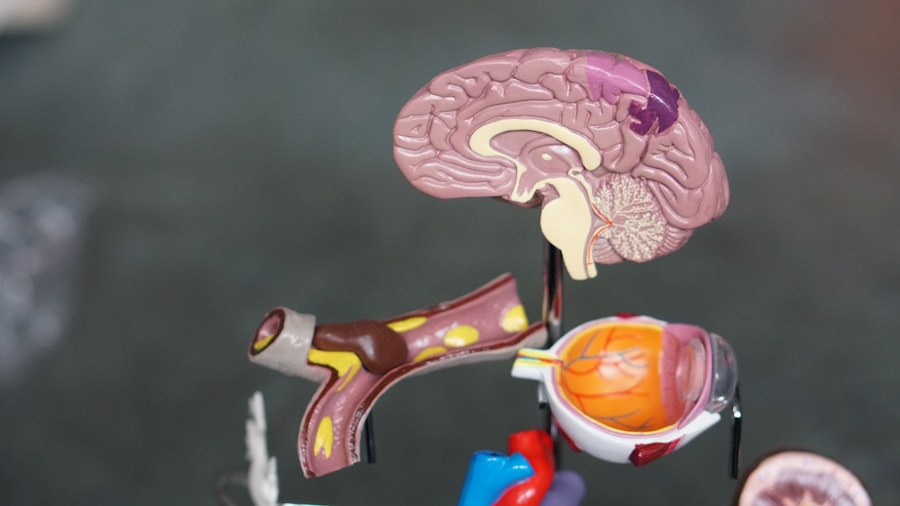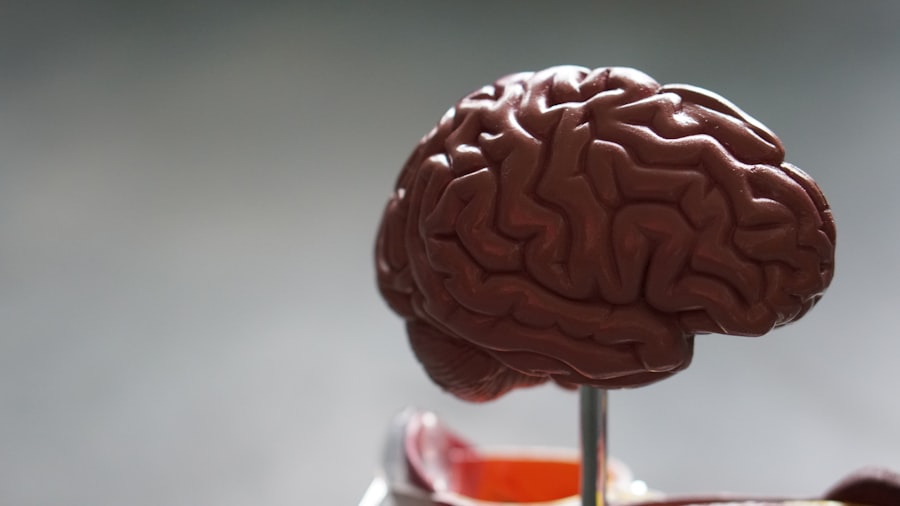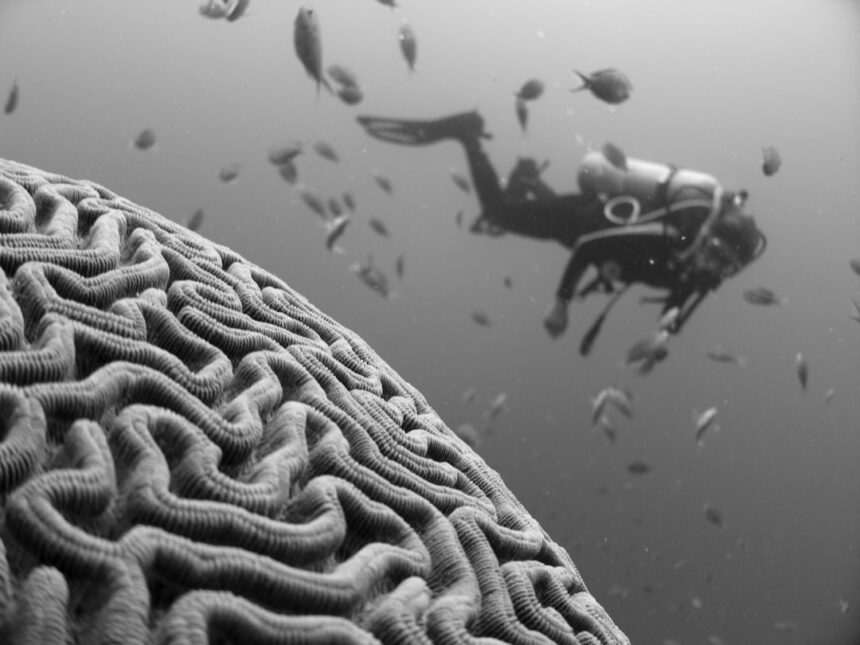When you experience trauma, your brain undergoes significant changes that can affect your emotional and physical well-being. The amygdala, often referred to as the brain’s alarm system, becomes hyperactive, leading to heightened feelings of fear and anxiety. This response is a natural survival mechanism, designed to protect you from future threats.
However, when the trauma is severe or prolonged, this heightened state can become maladaptive, causing you to remain in a constant state of alertness even when there is no immediate danger. Understanding this response is crucial for recognizing how trauma can shape your thoughts, behaviors, and overall mental health. Moreover, the hippocampus, which plays a vital role in memory formation and emotional regulation, can be adversely affected by trauma.
You may find that your ability to process memories becomes impaired, leading to flashbacks or intrusive thoughts. This disruption can create a cycle of distress, where the brain’s inability to properly process traumatic experiences leads to further emotional turmoil. By understanding these mechanisms, you can begin to recognize the importance of addressing trauma not just at the emotional level but also through targeted interventions that focus on rewiring the brain’s response systems.
Key Takeaways
- The brain’s response to trauma can lead to maladaptive pathways and patterns.
- Neuroplasticity plays a crucial role in reprogramming the brain and creating new, adaptive pathways.
- Therapeutic techniques such as cognitive behavioral therapy and mindfulness can help reprogram maladaptive brain pathways.
- Neurofeedback and brainwave regulation can also be effective in reprogramming the brain.
- Physical exercise, nutrition, and medication can all contribute to brain reprogramming and overall brain health.
Identifying Maladaptive Brain Pathways
As you delve deeper into the effects of trauma on your brain, it becomes essential to identify maladaptive pathways that may have formed as a result. These pathways are essentially neural circuits that have been reinforced through repeated exposure to stress or trauma. You might notice patterns in your thoughts or behaviors that seem automatic and unhelpful, such as avoidance of certain situations or persistent negative thinking.
Recognizing these patterns is the first step toward breaking free from them. To identify these maladaptive pathways, you can engage in self-reflection and mindfulness practices. Journaling about your thoughts and feelings can help you pinpoint triggers and responses that are rooted in past experiences.
Additionally, working with a therapist can provide valuable insights into your behavioral patterns and thought processes. By bringing awareness to these maladaptive pathways, you empower yourself to challenge and change them, paving the way for healthier responses and coping mechanisms.
The Role of Neuroplasticity in Reprogramming the Brain

Neuroplasticity is a remarkable feature of your brain that allows it to adapt and reorganize itself throughout your life. This ability means that even if you have developed maladaptive pathways due to trauma, there is hope for change. Neuroplasticity enables you to form new connections and strengthen existing ones, effectively reprogramming your brain’s responses.
Understanding this concept can be incredibly liberating; it suggests that you are not bound by your past experiences but have the capacity to reshape your future. Engaging in activities that promote neuroplasticity can be transformative. For instance, learning new skills or engaging in creative pursuits can stimulate brain activity and encourage the formation of new neural pathways.
By embracing neuroplasticity, you can take an active role in your healing journey, fostering resilience and adaptability in the face of life’s challenges.
Therapeutic Techniques for Reprogramming Brain Pathways
| Therapeutic Technique | Description | Effectiveness |
|---|---|---|
| Cognitive Behavioral Therapy (CBT) | A type of psychotherapy that helps individuals identify and change negative thought patterns and behaviors. | High |
| Neurofeedback | A type of biofeedback that uses real-time monitoring of brain activity to teach self-regulation of brain function. | Moderate |
| Transcranial Magnetic Stimulation (TMS) | A non-invasive procedure that uses magnetic fields to stimulate nerve cells in the brain to improve symptoms of depression and anxiety. | High |
| Eye Movement Desensitization and Reprocessing (EMDR) | A psychotherapy treatment designed to alleviate the distress associated with traumatic memories. | Moderate |
There are numerous therapeutic techniques available that can aid in reprogramming your brain pathways. One effective approach is exposure therapy, which gradually exposes you to the sources of your fear in a controlled environment. This method helps desensitize your brain’s response to trauma-related stimuli, allowing you to process these experiences more effectively over time.
By facing your fears rather than avoiding them, you can begin to weaken the maladaptive pathways that have formed. Another powerful technique is Eye Movement Desensitization and Reprocessing (EMDR). This therapy involves guided eye movements while recalling traumatic memories, which can help facilitate the processing of these experiences.
EMDR has been shown to be particularly effective for individuals with PTSD, as it allows for the integration of traumatic memories into a more coherent narrative. By exploring various therapeutic techniques, you can find what resonates with you and supports your journey toward healing and reprogramming.
Cognitive Behavioral Therapy and Brain Reprogramming
Cognitive Behavioral Therapy (CBT) is a widely recognized approach that focuses on changing negative thought patterns and behaviors associated with trauma. Through CBT, you learn to identify distorted thinking and replace it with more balanced perspectives. This process not only helps alleviate symptoms of anxiety and depression but also promotes healthier brain functioning by encouraging new neural connections.
In CBT sessions, you may engage in exercises that challenge your automatic thoughts and beliefs. For example, if you often think “I am not safe,” CBT would guide you to explore evidence for and against this belief. By reframing your thoughts, you can begin to alter the emotional responses tied to those thoughts, ultimately leading to a reprogramming of your brain’s pathways.
The skills learned in CBT are not only applicable during therapy but can also be practiced in everyday life, empowering you to take control of your mental health.
Mindfulness and Meditation for Brain Reprogramming

Mindfulness and meditation are powerful tools for reprogramming your brain pathways by fostering present-moment awareness and reducing stress. When you practice mindfulness, you train your brain to focus on the here and now rather than getting caught up in past traumas or future anxieties. This shift in focus can help calm the hyperactive amygdala and promote a sense of safety and relaxation.
Meditation has been shown to increase gray matter density in areas of the brain associated with emotional regulation and self-awareness. Regular practice can lead to lasting changes in how your brain processes emotions and responds to stressors. By incorporating mindfulness techniques into your daily routine—such as mindful breathing or body scans—you create opportunities for your brain to rewire itself positively.
Over time, these practices can help diminish the impact of trauma on your life.
Neurofeedback and Brainwave Regulation
Neurofeedback is an innovative approach that allows you to gain insight into your brain activity and learn how to regulate it consciously. During neurofeedback sessions, sensors are placed on your scalp to monitor brainwave patterns while you engage in specific tasks or relaxation exercises. This real-time feedback helps you understand how different mental states correspond with various brainwave frequencies.
By training yourself to achieve desired brainwave patterns—such as those associated with relaxation or focus—you can effectively reprogram your brain’s responses over time. Neurofeedback has shown promise in treating conditions like anxiety, depression, and PTSD by helping individuals develop greater control over their emotional states. As you engage with this technique, you may find that it enhances your overall mental clarity and emotional resilience.
Physical Exercise and Brain Reprogramming
Physical exercise is not only beneficial for your body but also plays a crucial role in promoting brain health and reprogramming neural pathways. When you engage in regular physical activity, your brain releases endorphins and other neurochemicals that enhance mood and reduce stress levels. Exercise has been shown to increase neurogenesis—the growth of new neurons—particularly in the hippocampus, which is vital for memory and emotional regulation.
Incorporating exercise into your routine can also improve cognitive function and enhance overall mental clarity. Whether it’s through aerobic activities like running or strength training exercises, finding a form of movement that you enjoy can make a significant difference in how your brain processes stress and trauma. As you commit to regular physical activity, you’re not just improving your physical health; you’re actively participating in the reprogramming of your brain for better emotional well-being.
Nutrition and Brain Health
The food you consume has a profound impact on your brain health and its ability to recover from trauma. A balanced diet rich in nutrients supports optimal brain function by providing essential vitamins and minerals necessary for neurotransmitter production and overall cognitive health. Omega-3 fatty acids found in fish, nuts, and seeds are particularly beneficial for reducing inflammation and promoting neuroplasticity.
Additionally, maintaining stable blood sugar levels through regular meals can help regulate mood and energy levels. Foods high in antioxidants—such as fruits and vegetables—can protect against oxidative stress that may contribute to cognitive decline. By prioritizing nutrition as part of your healing journey, you’re equipping your brain with the tools it needs to rewire itself effectively.
Medication and Brain Reprogramming
In some cases, medication may be necessary to support the reprogramming of your brain pathways following trauma. Antidepressants or anti-anxiety medications can help stabilize mood and alleviate symptoms while you engage in therapeutic practices aimed at addressing the root causes of distress. It’s essential to work closely with a healthcare professional who understands your unique situation and can guide you toward appropriate treatment options.
While medication can provide relief from symptoms, it is often most effective when combined with other therapeutic approaches such as CBT or mindfulness practices. This integrative approach allows for a more comprehensive strategy in addressing both the biochemical aspects of trauma response as well as the psychological components.
Integrating Holistic Approaches for Comprehensive Brain Reprogramming
To achieve lasting change in how your brain responds to trauma, consider integrating holistic approaches into your healing journey. This might include combining traditional therapies with alternative practices such as yoga, acupuncture, or aromatherapy. Each of these modalities offers unique benefits that can enhance overall well-being while supporting brain reprogramming efforts.
For instance, yoga not only promotes physical flexibility but also encourages mindfulness and relaxation through breathwork and meditation techniques. Similarly, acupuncture has been shown to reduce stress levels by balancing energy flow within the body. By embracing a holistic approach that addresses both mind and body, you’re more likely to create a sustainable path toward healing that fosters resilience against future challenges.
In conclusion, understanding the complexities of how trauma affects the brain opens up avenues for healing through various therapeutic techniques and lifestyle changes. By recognizing maladaptive pathways, harnessing neuroplasticity, and integrating holistic approaches into your life, you empower yourself on a journey toward reprogramming your brain for greater emotional well-being and resilience.
In recent years, there has been a growing interest in understanding how to change brain pathways affected by trauma. This process, often referred to as neuroplasticity, involves the brain’s ability to reorganize itself by forming new neural connections. For those interested in exploring this topic further, a related article can be found on Unplugged Psychology’s website. This article delves into the mechanisms of neuroplasticity and offers insights into therapeutic approaches that can aid in the healing process. You can read more about it by visiting Unplugged Psychology.
🧠 Your Trauma Is Rewiring Your Brain: Here’s How to Undo It | A Neuroplasticity & Somatic Guide
FAQs
What are brain pathways?
Brain pathways are the connections between different parts of the brain that allow for the transmission of information and the coordination of various functions.
How does trauma affect brain pathways?
Trauma can disrupt normal brain pathways, leading to changes in the way the brain processes information and responds to stimuli. This can result in symptoms such as anxiety, depression, and difficulty regulating emotions.
Can brain pathways be changed after trauma?
Yes, it is possible to change brain pathways after trauma through various therapeutic interventions and practices. This process is known as neuroplasticity, and it involves the brain’s ability to reorganize itself and form new connections.
What are some ways to change brain pathways after trauma?
Therapeutic interventions such as cognitive behavioral therapy, mindfulness practices, and exposure therapy can help change brain pathways after trauma. Additionally, activities such as exercise, meditation, and engaging in new learning experiences can also promote neuroplasticity.
How long does it take to change brain pathways after trauma?
The time it takes to change brain pathways after trauma can vary depending on the individual and the severity of the trauma. Some people may experience changes relatively quickly, while others may require more time and consistent effort to see significant changes.




